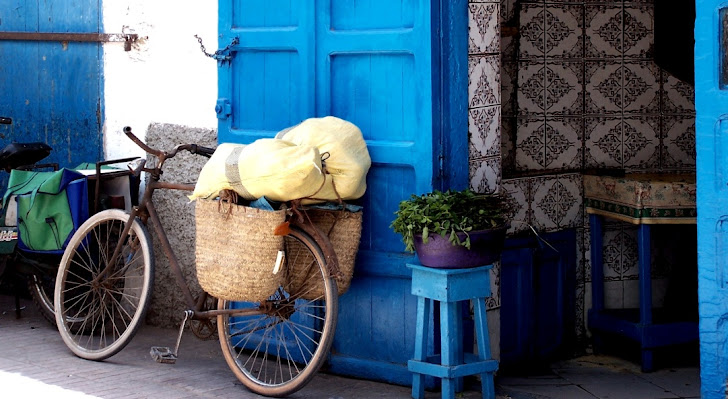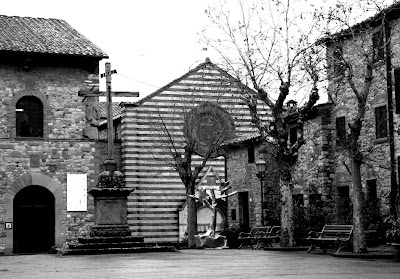
I have finally managed to buy a card for a friend who has just had a baby girl. Mind you, *just* means last November. So it took me only three months to get round to remember. Of course the addressed envelope is still lingering on the top of the piano. I am confident it will be sent within next month.
I thought the English language is funny sometimes. "A new baby" says the card. Can you have old babies? Or *second hand* perhaps?
Morocco. A few words on it. I am sure that all of you, well travelled as you are, have been there. I keep meaning to make a return but dread it in case I get disappointed. I have heard the northern coast is just marvel. Chefchaouen or the blue city is a real gem.
Marrakech probably is the hub, and trap, of all tourists. It has undoubtedly its charms, and I wouldn't give it a miss. I would suggest though to adventure yourself a bit far afield and step out of the Medina (the old city). You will be amazed by the contrast. It is also a good way to know real prices so that you can haggle more effectively back in the souks. Having a husband who gets impatient very quickly is also a good bargaining method!
Oh sorry, I was about to forget to share with you this great recipe. The quantities are for two people but of course just do the maths and you can serve it for as many people as you want.
Beef with orange and star anise
For 2 people
2 beef (or duck or even pork) fillets
juice and rind of half orange
2-3 star anise
1 tsp fennel seeds
1 tsp cumin powder
1 tsp chilly flakes
2 tbsp olive oil
1 tbsp runny honey
1 tsp salt
1 tsp pepper
1. Crush the fennel seeds and flakes and mix them with the cumin powder and salt. Rub the meat with this mix. Cover the meat with oil and honey previously combined. Add the orange rind and then cover the meat with cling film and set aside for at least 45 minutes (even a few hours!).
2. In a pan heat another tbsp of oil. When it is getting warm, add the anise and squeeze the orange and let it sizzle for a minute or two. Add more juice to ensure the liquid doesn't evaporate.
3. When the oil is hot, place the meat and cook it for a few minutes (depending how rare you want it, I am a werewolf and love my steak dripping in blood). Make sure the marinate gets distributed on top and cooks together with the meat.
You can serve it with almost anything. Green lentils cooked with cumin and bay leaves, cabbage cooked with cinnamon and pine nuts, couscous with saffron and cumin....etc, etc....

















































